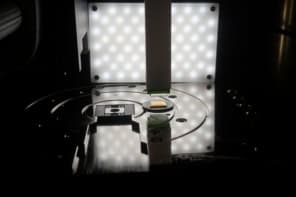Japanese researchers studying the behaviour of manganese oxides believe they have discovered a compound that could lead the development of an optical computer. When the compound is illuminated with short laser pulses, it changes from an insulator to a conductor along the path of the beam. The ability to manipulate conducting paths could be used to construct optical switches (Science 280 1925).
The researchers cooled the manganese oxide compound (Pr0.7Ca0.3MnO3) to below 200 K in a zero magnetic field. At this temperature the electrons drop into a low energy state, which minimizes their natural repulsion. The material is usually an insulator, but previous experiments indicated that it can be transformed to a conductor by using X-rays, visible light or electric fields.
Manfred Fiebig and colleagues at the University of Tokyo fabricated two gold electrodes on the surface of the material separated by 150 nm. When they fired rapid pulses of ultraviolet light between the electrodes, they noticed that the change to a conductor state remains localized between the electrodes. Once the laser pulses are switched off, the material remains a conductor until current stops flowing between the electrodes.
The effect appears to be similar to an effect called negative differential resistance, which is found in semiconductors. When a electron in a semiconductor is subjected to a high electric field, the field excites the electron enough for it to ionize impurities in the material. This causes a chain reaction in which other electrons released in the collisions ionize other molecules, changing the material to a weak conductor. However, in semiconductors this is thought to be a “single electron” effect – as the electric field increases, a given electron acquires more energy before it hits an impurity. A more complex many-body effect appears to be happening in the oxide which means that the conductor effect is more noticeable.


